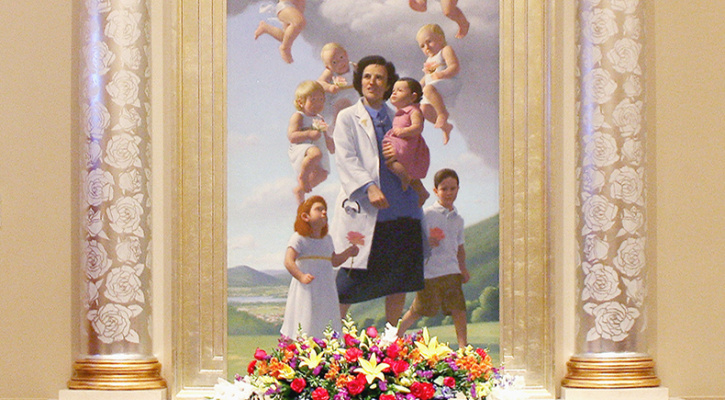Photo: President Trump vows to end chain migration (Screenshot)
By David North, CNSNews, January 4, 2018
 It is good news that the nation is starting to pay some attention to the peculiar priority given in the immigrant-selection process to relatives of earlier migrants — chain migration.
It is good news that the nation is starting to pay some attention to the peculiar priority given in the immigrant-selection process to relatives of earlier migrants — chain migration.
The blunter, older term — nepotism — might be used in this connection, but rarely is.
It may be useful to look at the almost accidental origin of chain migration, back in 1965; at the various chains that the 1965 Amendments to the INA set in motion; and at the highly differential results coming from these different chains, something I first researched about 40 years ago.
Accidental Birth. At the height of liberal power, in the years after the assassination of John Kennedy, the push for civil rights legislation and the War on Poverty was accompanied by a growing desire to end the country-of-origin quota system that blatantly discriminated in favor of northern and western Europeans, and just about eliminated any legal immigration from Africa and Asia.
The pressure from the left was to eliminate the old system, and the resulting debate was much more about correcting the old wrongs than what should be substituted for the old system. (That system, by the way, paid little attention to migration from the Western Hemisphere, which was a small-scale activity in those days.)
There was no question that immigration must be limited numerically, something that the old system did reasonably well. But if you are going to stop distributing most visas by nation of origin, how are you to allocate them? The result, without much thinking, was to grant some visas to “needed” workers and the rest to various groups of relatives. That decision created what we now have, a system where most arriving immigrants are here because they are related to earlier migrants, and this is chain migration.
Several Chains. Yes, most arriving immigrants are related to earlier ones, but it is not just a distinction between workers on one hand and relatives on the other. It is more complex than that. A key question is who were the pioneer migrants in a given stream? A large number of follow-on relatives now are related to earlier-relative migrants. Other chains are based on the arrival of a modest number of worker immigrants, and still others on refugee, asylee, diversity, and crime-victim migrants.
So there are chains involving relatives of relatives, for example, relatives of workers, and relatives of earlier refugees (who may or not be refugees themselves.) Once the pioneer relative becomes a green card holder or a citizen, the immigration admission system makes no distinctions as to which relatives are to be admitted, but the differential results, certainly in economic terms, are striking and rarely discussed.
Different Impacts of Different Chains. Back in the 1970s, I persuaded the U.S. Labor Department to fund a study on the differential impact of the different categories of immigrants, talked the old INS into giving me Social Security numbers of a sample of several subgroups of the 1970 cohort of immigrants, and then (and this was the awkward part) got the Social Security Administration to give us earnings data on each of the categories.
Because of how the immigration selection process operated in those days, we secured information on the samples of seven categories of immigrants: two groups of worker immigrants and five groups of relative immigrants. Their median earnings, according to SSA, were as follows for the year 1975:
-
Eastern Hemisphere (EH) workers: $8,623
-
EH workers’ relatives: $5,647
-
EH relatives: $5,075
-
EH relatives’ relatives: $4,597
-
Western Hemisphere (WH) workers: $6,386
-
WH relatives: $4,643
-
Immediate relatives of citizens (EH + WH): $4,851







